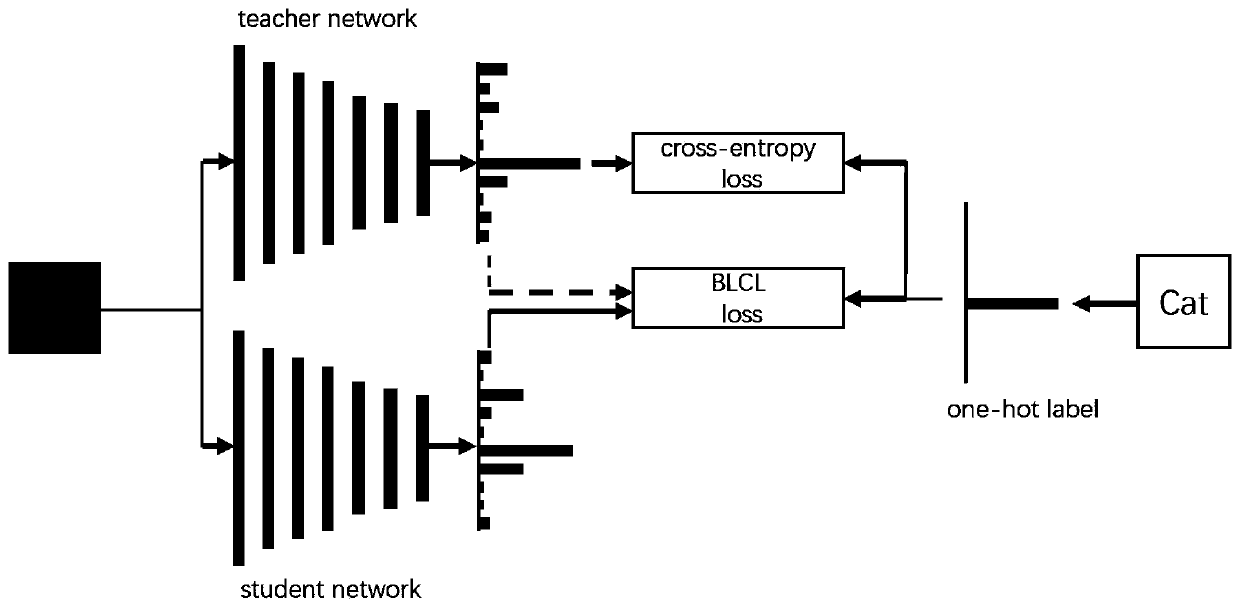Image recognition method based on deep course learning
An image recognition and course technology, applied in the field of image recognition, can solve problems such as inability to fit real annotation results, deep convolutional neural network penalties, etc., and achieve the effects of reduced training workload, fast update speed, and high prediction accuracy.
- Summary
- Abstract
- Description
- Claims
- Application Information
AI Technical Summary
Problems solved by technology
Method used
Image
Examples
Embodiment Construction
[0030] An image recognition method based on deep course learning. In this embodiment, given image data sets such as CIFAR10 and CIFAR100, we use different deep neural network models to verify the effectiveness of BLCL learning.
[0031] Each data set is first divided into two parts, the training set and the test set, and the training data is divided into batches for training.
[0032] Specific steps are as follows:
[0033] S10. Construct a teacher network and a student network based on a deep convolutional neural network; the convolutional neural network in this embodiment uses ResNet-8, ResNet-20, ResNet-32 and DensNet-BC.
[0034] S20. Using the training samples to perform image recognition and classification training on the teacher network; the teacher network learns the training samples and predicts the probability that the training samples belong to each category;
[0035] The training samples are CIFAR10 and CIFAR100 data sets. The training set contains 50,000 pictures...
PUM
 Login to View More
Login to View More Abstract
Description
Claims
Application Information
 Login to View More
Login to View More - R&D
- Intellectual Property
- Life Sciences
- Materials
- Tech Scout
- Unparalleled Data Quality
- Higher Quality Content
- 60% Fewer Hallucinations
Browse by: Latest US Patents, China's latest patents, Technical Efficacy Thesaurus, Application Domain, Technology Topic, Popular Technical Reports.
© 2025 PatSnap. All rights reserved.Legal|Privacy policy|Modern Slavery Act Transparency Statement|Sitemap|About US| Contact US: help@patsnap.com



